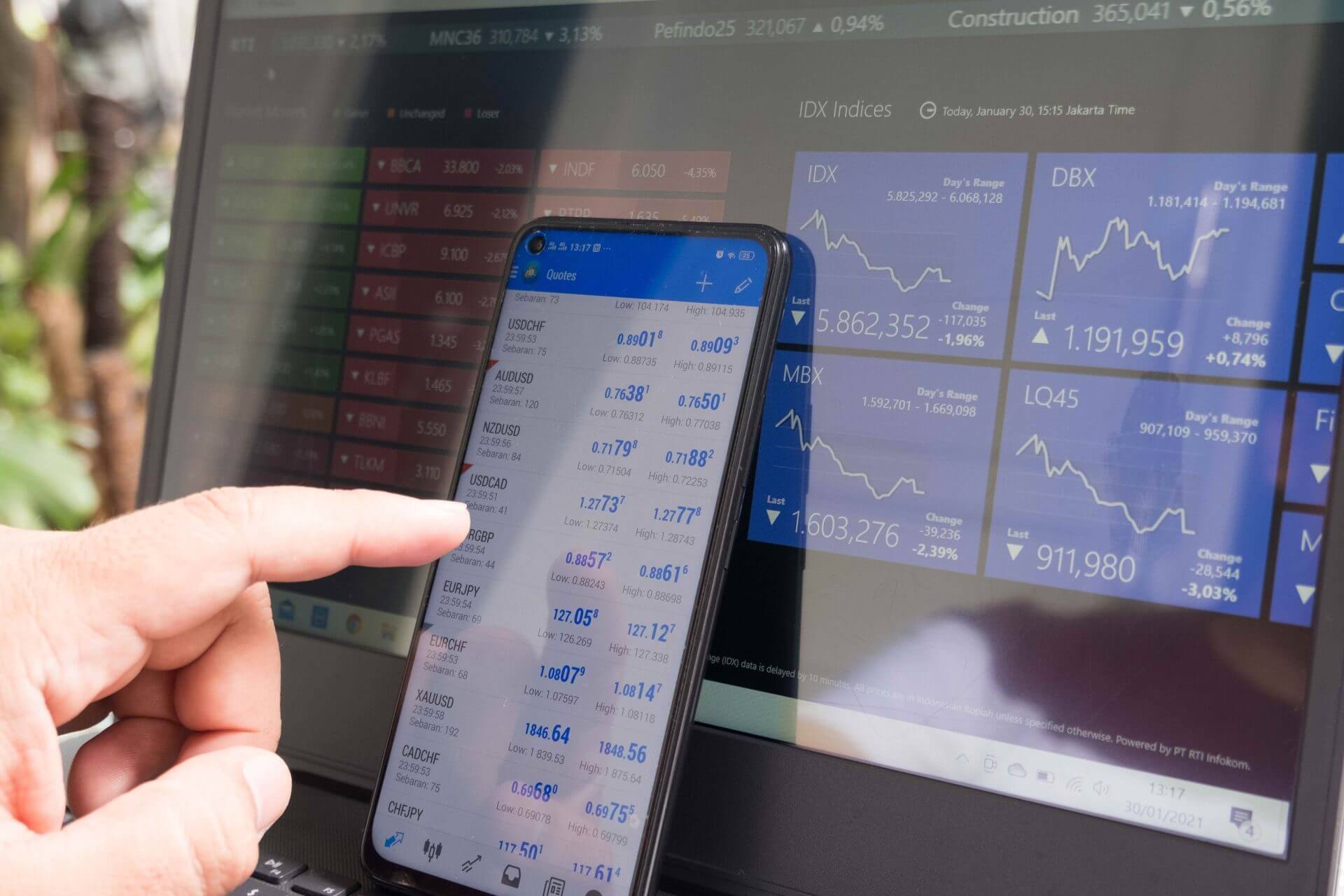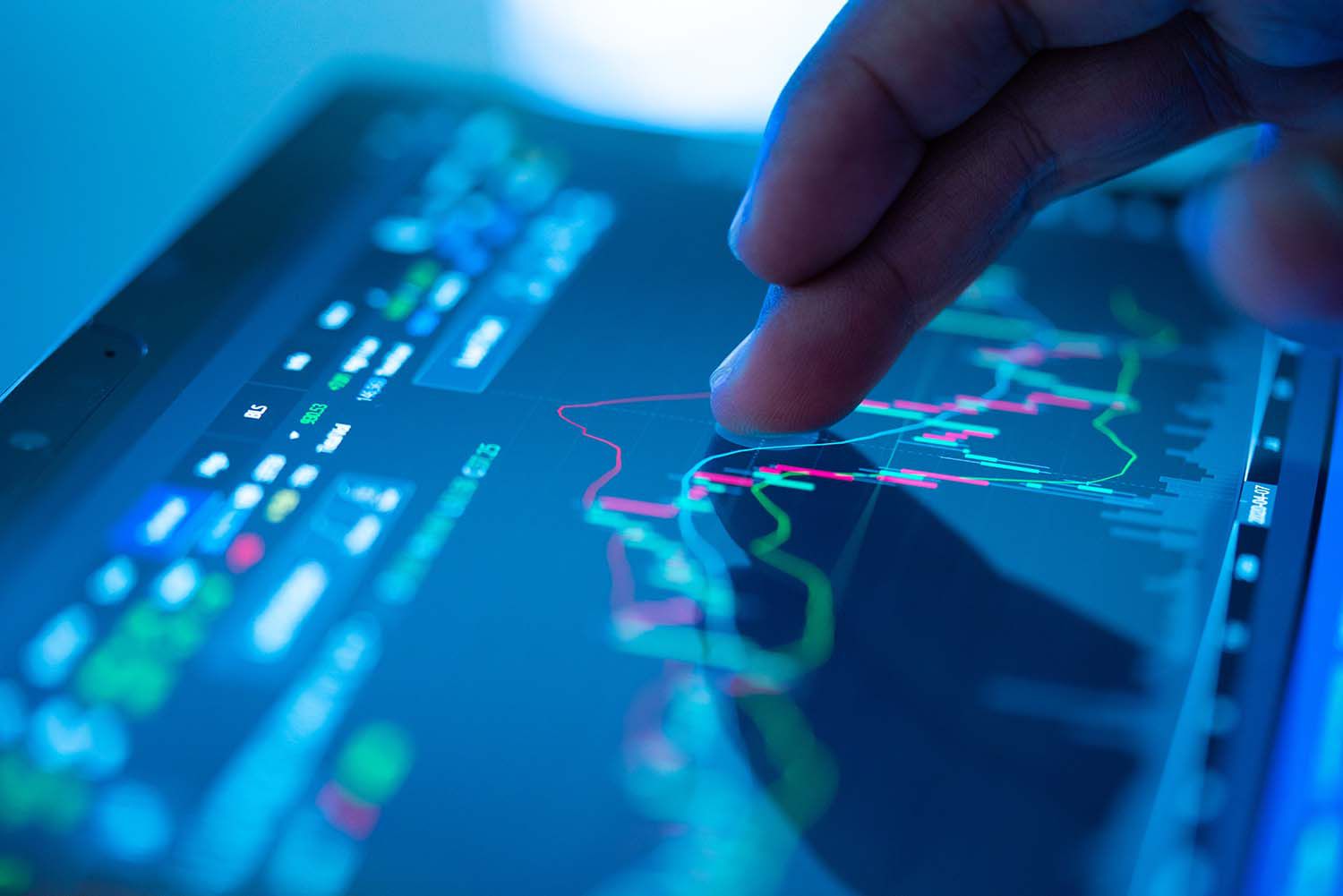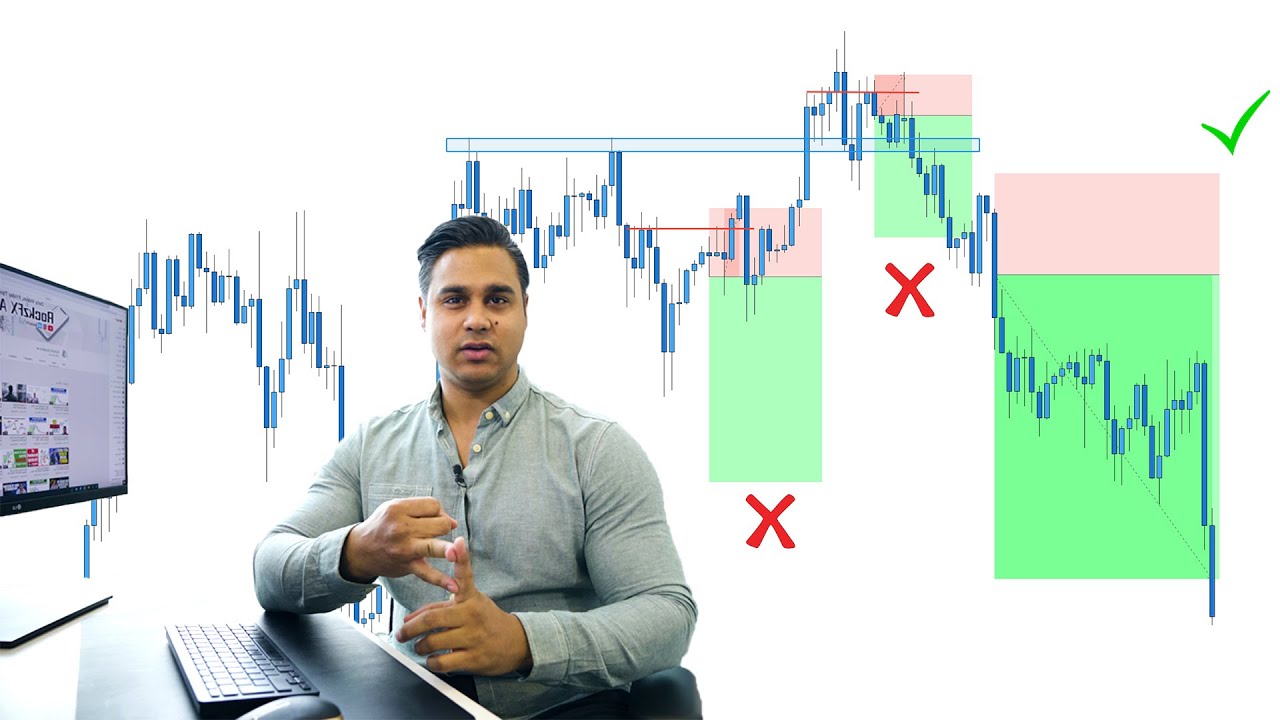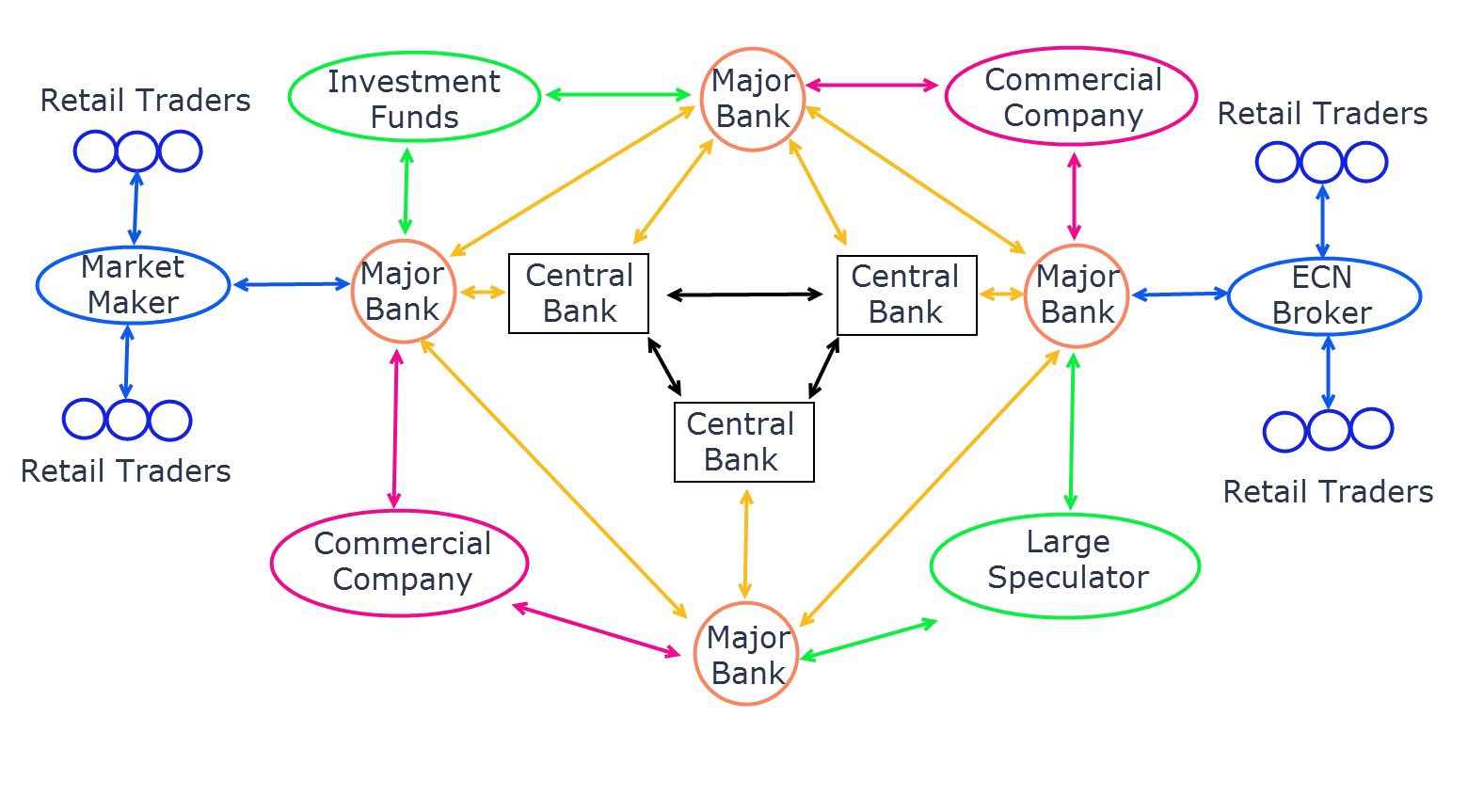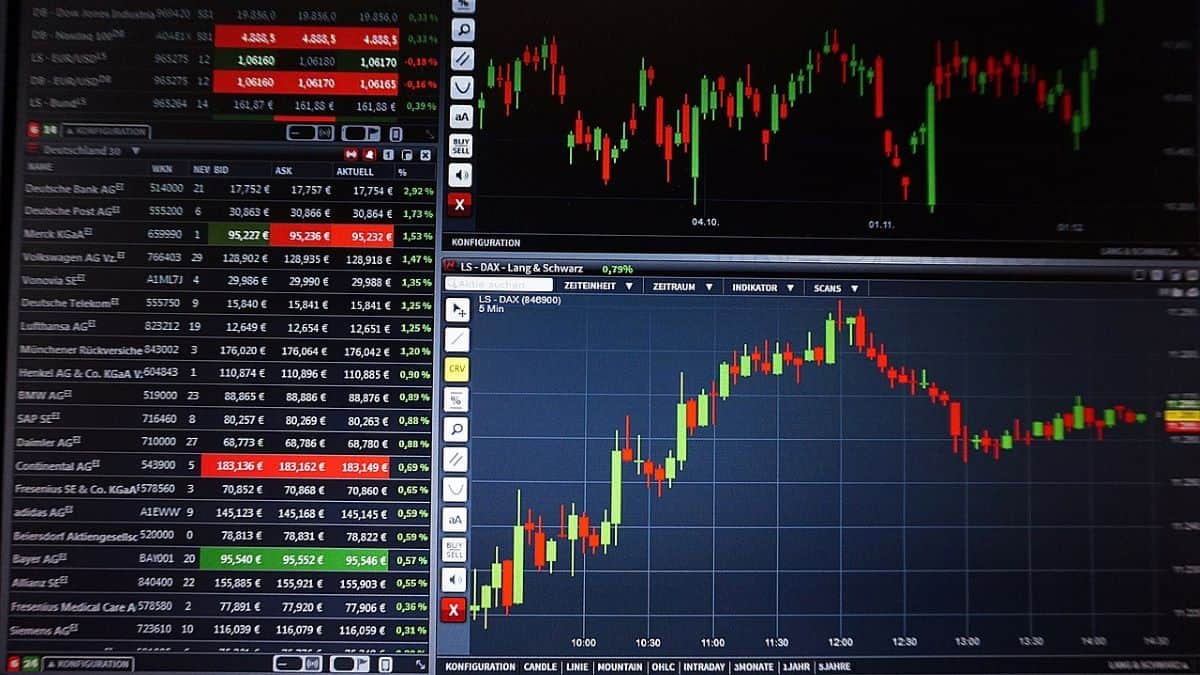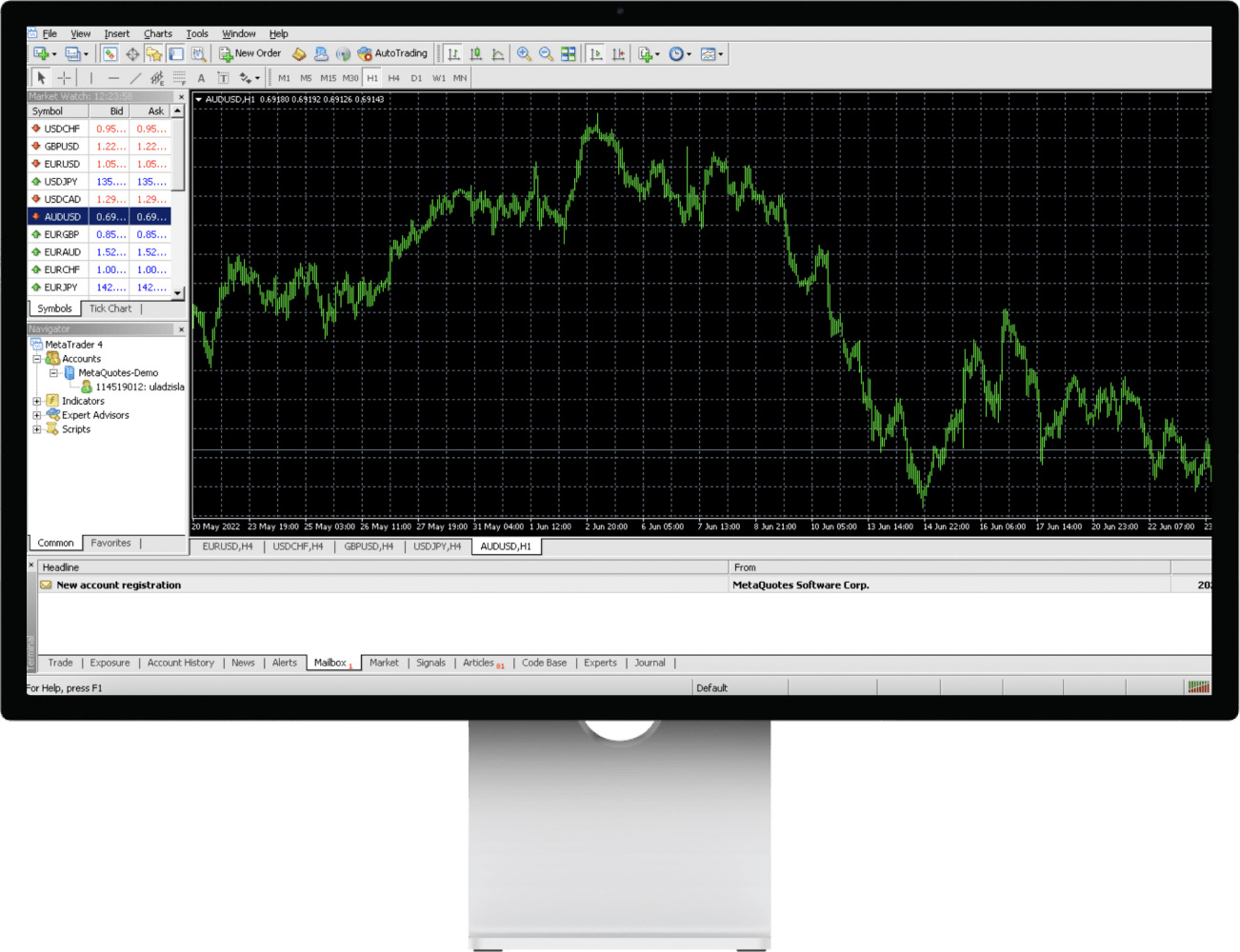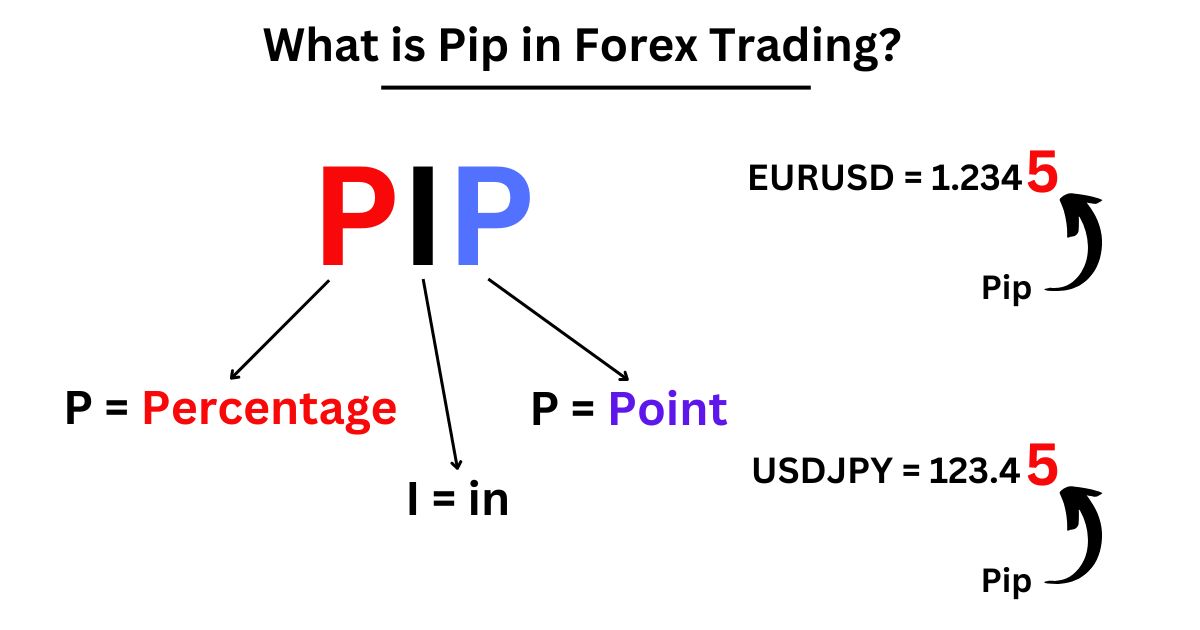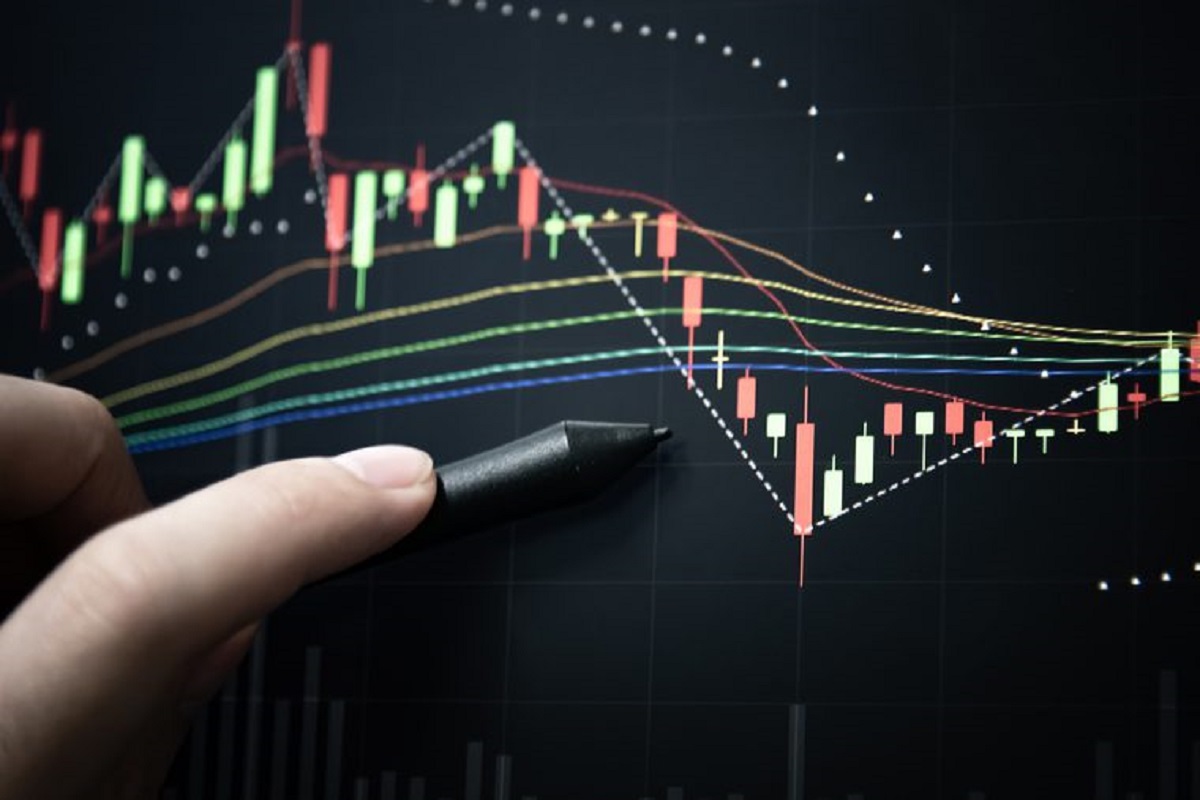Introduction
Welcome to the exciting world of forex trading! If you’ve ever been interested in the financial markets and have a passion for potentially profiting from currency fluctuations, then forex trading is a fantastic opportunity to explore. In this article, we will guide you through the process of understanding how much you need to start trading forex, providing you with the essential information you need to kickstart your trading journey.
Forex, short for foreign exchange, is the global decentralized market where the world’s currencies are traded. It is the largest and most liquid market in the world, with trillions of dollars being traded on a daily basis. Unlike other financial markets, such as stocks or commodities, forex operates 24 hours a day, five days a week, allowing traders to participate from anywhere in the world.
Before diving into the world of forex trading, it’s crucial to gain a basic understanding of how the market works. Currencies are traded in pairs, such as EUR/USD or GBP/JPY, with the first currency being the base currency and the second being the quote currency. The value of a pair represents the exchange rate between the two currencies.
When it comes to starting your forex trading journey, one of the important factors to consider is choosing a reliable forex broker. A forex broker acts as an intermediary between you and the forex market, allowing you to buy and sell currencies. It’s essential to conduct thorough research and select a reputable broker that offers a user-friendly trading platform, competitive spreads, reliable customer support, and robust security measures.
Once you have chosen a broker, it’s time to define your trading goals and strategy. Ask yourself what you want to achieve with forex trading and determine your risk tolerance. Do you want to make short-term gains or focus on long-term investments? Are you a conservative or aggressive trader? These questions will help shape your trading plan and guide your decision-making process.
While forex trading offers immense profit potential, it is crucial to remember that it involves risks. One of the key considerations in forex trading is determining your risk capital, which is the amount of money you are willing to put at risk in your trading account. It’s essential to only use disposable income that you can afford to lose. Never trade with money that is meant for your living expenses or other essential financial obligations.
In the next section, we will explore how to calculate the minimum deposit requirement for forex trading and discuss the additional costs and fees you may encounter.
Understanding the Basics of Forex Trading
Forex trading involves buying and selling currencies with the aim of profiting from the fluctuations in their exchange rates. It requires understanding key concepts and terms associated with the forex market. Let’s explore some of the basics:
Lots: In forex trading, trades are typically conducted in standardized contract sizes called lots. Standard lots consist of 100,000 units of the base currency, while mini and micro lots represent 10,000 and 1,000 units, respectively. Trading in smaller lot sizes allows for more flexibility and risk management.
Pips: A pip, short for “percentage in point,” is the smallest unit of measurement in forex trading, representing the fourth decimal place in most currency pairs. Most currency pairs are quoted to five decimal places, with the pip being the last decimal point. Understanding pips is vital as they determine the profit or loss in a trade.
Leverage: Leverage is a tool that allows traders to control larger positions with a smaller amount of capital. It is expressed as a ratio and indicates the amount of borrowed funds a broker provides. While leverage can amplify potential profits, it also magnifies losses and should be used with caution.
Long and Short Positions: In forex trading, you have the opportunity to profit in both rising and falling markets. Going long means buying a currency pair with the expectation that its value will increase. Conversely, going short involves selling a currency pair with the anticipation that its value will decrease. By taking positions in both directions, traders can potentially capitalize on market movements.
Market Orders and Limit Orders: Market orders are executed instantly at the current market price, while limit orders are placed to buy or sell at a specific price (the limit). Limit orders can be useful for entering trades at specific price levels or exiting trades to secure profits or limit losses.
Technical and Fundamental Analysis: Analyzing the forex market requires considering both technical and fundamental factors. Technical analysis involves studying price charts and using indicators to identify patterns and trends. Fundamental analysis focuses on analyzing economic data, geopolitical events, and other factors that can impact currency values.
Stop Loss and Take Profit: Implementing risk management strategies is crucial in forex trading. Stop loss orders are used to limit potential losses by automatically closing a trade when the market moves against you. Take profit orders are placed to automatically close a trade when a certain profit target is reached. These tools help traders protect their capital and lock in profits.
Continuous Learning: Forex trading is a dynamic and ever-changing market. It is essential to continuously expand your knowledge and skills to stay informed about market developments, improve your trading strategies, and adapt to changing market conditions.
Understanding these basic concepts of forex trading sets the foundation for your journey. In the next section, we will discuss how to choose a reliable forex broker that caters to your trading needs and goals.
Choosing a Reliable Forex Broker
Choosing the right forex broker is crucial for your success as a forex trader. With numerous brokers available, it’s essential to do thorough research and consider several key factors before making a decision. Here are some important aspects to consider when selecting a reliable forex broker:
Regulation and Licensing: Ensure that the broker you choose is regulated by a reputable financial authority. Regulatory bodies such as the Financial Conduct Authority (FCA), the Securities and Exchange Commission (SEC), or the Australian Securities and Investments Commission (ASIC) provide oversight and protection for traders. Regulation helps ensure fair trading practices and the security of your funds.
Trading Platform: The trading platform is your gateway to the forex market. It should be user-friendly, stable, and equipped with essential features such as real-time price charts, technical analysis tools, and order execution capabilities. Test the platform’s demo version to assess its functionality and suitability for your trading style.
Spreads and Commissions: Forex brokers earn their profits through spreads and commissions. Spreads refer to the difference between the buy and sell price of a currency pair, and brokers typically offer fixed or variable spreads. Lower spreads can result in reduced trading costs, especially for frequent traders. Additionally, consider any commission charges imposed by the broker.
Execution Speed: The speed at which your trades are executed is crucial in forex trading. Look for brokers that offer fast and reliable trade execution, minimizing the chances of slippage or requotes. Quick execution can be particularly important for scalpers or traders who rely on short-term price movements.
Customer Support: In the fast-paced world of forex trading, responsive and helpful customer support is essential. Choose a broker that offers various channels of communication, such as live chat, phone support, or email. Prompt and knowledgeable support can assist you in resolving any issues or answering any questions effectively.
Account Types and Minimum Deposits: Consider the different account types offered by the broker and choose one that aligns with your trading needs. Some brokers offer different account tiers, such as standard, mini, or VIP accounts. Additionally, be aware of the minimum deposit required to open an account, as this can vary significantly among brokers.
Additional Services: Some brokers offer additional services that may be beneficial to your trading experience. For example, educational resources, market analysis, or access to copy trading platforms. Assess these additional features and determine if they add value to your trading journey.
Security: Given the online nature of forex trading, security should be a top priority. Look for brokers that provide robust security measures, such as encryption technology, to ensure the safety of your personal and financial information. Additionally, consider brokers that offer segregated client accounts to protect your funds.
Take your time in evaluating different brokers and considering how they align with your trading goals, preferences, and level of experience. Making an informed decision when choosing a reliable forex broker can greatly contribute to your overall trading success.
Defining Your Trading Goals and Strategy
Successful forex trading requires a clear understanding of your trading goals and the development of a well-defined trading strategy. Defining these aspects early on can help you stay focused, make informed decisions, and increase your chances of achieving consistent profitability. Let’s explore how to define your trading goals and develop a robust trading strategy:
Identify Your Objectives: Start by determining what you want to achieve through forex trading. Are you looking for supplemental income, financial independence, or wealth accumulation? Understanding your goals will provide you with a clear direction and motivation to work towards.
Time Commitment: Consider how much time you can dedicate to forex trading. Are you looking for full-time involvement or planning to trade part-time alongside other commitments? Your availability will determine the type of trading strategy and frequency of trades you can pursue.
Risk Tolerance: Assess your risk tolerance level and determine how much capital you are comfortable risking on each trade. This will help you define your position sizing and risk management approach. Keep in mind that higher risk often comes with the potential for higher returns, but it also increases the potential for losses.
Trading Style: Different trading styles suit different personalities and preferences. Are you more inclined towards day trading, swing trading, or long-term investing? Each style involves different timeframes, analysis methods, and risk levels. Explore various trading styles and identify the one that aligns with your strengths and preferences.
Technical or Fundamental Analysis: Decide whether you will primarily base your trading decisions on technical analysis, fundamental analysis, or a combination of both. Technical analysis involves studying price charts, patterns, and indicators, while fundamental analysis focuses on economic data and news events that impact currency values. Understanding which approach resonates with you will help shape your trading strategy.
Entry and Exit Strategies: Determine how you will enter and exit trades. This includes identifying specific technical indicators or patterns you will rely on for trade entries, as well as setting profit targets and stop-loss levels to manage your trades. Building a systematic approach to entering and exiting trades can help remove emotions from your decision-making process.
Journaling and Evaluation: Establish a process for tracking your trades and evaluating their outcomes. Maintaining a trading journal allows you to review your performance, identify strengths and weaknesses, and make necessary adjustments to your strategy. Regularly assessing and fine-tuning your trading strategy is essential for long-term success.
Continuous Learning: Forex markets are dynamic, and it’s crucial to stay updated with market trends and changing conditions. Continuously educate yourself through books, courses, webinars, and other educational resources. Expand your knowledge and remain open to testing new strategies or refining existing ones.
Defining your trading goals and strategy is a vital step towards becoming a successful forex trader. By understanding your objectives, risk tolerance, and preferred trading style, you can build a solid foundation for your trading journey. In the next section, we will discuss how to determine your risk capital and calculate the minimum deposit requirement for forex trading.
Determining Your Risk Capital
Before you embark on your forex trading journey, it is crucial to determine the amount of risk capital you are willing to allocate to your trading account. Risk capital refers to the funds that you are comfortable putting at risk in the markets, separate from your essential living expenses or other financial obligations. Understanding your risk capital is essential for effective risk management and preserving your financial well-being. Let’s delve into the process of determining your risk capital:
Evaluate Your Financial Situation: Begin by evaluating your overall financial situation. Take a comprehensive look at your income, expenses, savings, and debt obligations. Determine the amount of disposable income that you can allocate towards forex trading without jeopardizing your financial stability or essential financial responsibilities.
Assess Your Risk Tolerance: Understanding your risk tolerance is crucial in determining your risk capital. Consider your comfort level with fluctuations in the value of your trading account. Are you willing to accept the potential for significant losses in pursuit of potential profits? Assessing your risk tolerance will help you establish appropriate risk management measures and avoid excessive exposure to the markets.
Start Small: It is generally advisable to start with a small portion of your risk capital when beginning your forex trading journey. Doing so allows you to gain experience, refine your trading strategies, and manage your emotions as you become familiar with the dynamics of the market. Starting small mitigates the risk of substantial losses during the learning phase.
Consider Risk-Reward Ratio: Your risk capital should be determined by considering your desired risk-reward ratio for each trade. The risk-reward ratio indicates the potential reward in relation to the amount you are willing to risk in a trade. For example, if you aim for a risk-reward ratio of 1:2, you are willing to risk one unit of your capital to potentially gain two units. By identifying your risk-reward ratio, you can calculate your position size and the amount of capital required to achieve your trading goals.
Implement Proper Risk Management: Effective risk management is essential in forex trading. It involves implementing strategies such as setting stop-loss orders to limit potential losses and avoiding overexposure by diversifying your trades. Risking a small percentage of your risk capital on each trade, often recommended to be 1-2% per trade, ensures that you can withstand a series of losses without depleting your funds.
Regularly Evaluate and Adjust: As your trading skills and experience grow, regularly evaluate the performance of your trading strategy and adjust your risk capital accordingly. Assess the profitability of your trades, monitor your risk management practices, and make informed decisions on whether to increase or decrease the amount of risk capital you allocate to trading.
Taking the time to determine your risk capital before entering the forex market is an integral part of successful trading. By assessing your financial situation, understanding your risk tolerance, and employing effective risk management practices, you can optimize your chances of long-term profitability while safeguarding your financial stability.
Calculating the Minimum Deposit Requirement
One essential aspect to consider when starting forex trading is calculating the minimum deposit requirement. The minimum deposit refers to the minimum amount of funds you need to deposit into your trading account to initiate trading. The specific minimum deposit requirement can vary among brokers and account types, and understanding this requirement is essential for budgeting and planning purposes. Let’s explore how to calculate the minimum deposit requirement:
Broker Requirements: Different forex brokers have different minimum deposit requirements. Some brokers may have no minimum deposit, while others may require a specific amount, such as $100 or $500. Research and compare different brokers to identify those with minimum deposit requirements that align with your budget and trading goals.
Account Types: Forex brokers often offer different account types, each with its own minimum deposit requirement. These account types may include standard accounts, mini accounts, or even premium or VIP accounts. The minimum deposit requirement tends to be higher for premium or VIP accounts that offer additional benefits and features.
Consider Trading Costs: When calculating the minimum deposit requirement, it’s important to consider the trading costs involved. Apart from the initial deposit, you should also account for transaction fees, spreads, commissions, and any other applicable charges. These costs can vary significantly among brokers and should be factored into your budgeting calculations.
Risk Management: Your minimum deposit requirement should also take into account proper risk management practices. It is recommended to risk a small percentage of your trading capital on each trade, usually between 1% and 2%. This means that your minimum deposit should be sufficient to afford multiple trades while adhering to your risk management strategy.
Trading Strategy and Goals: Your trading strategy and goals can also influence the minimum deposit requirement. If your strategy requires frequent trading with shorter timeframes, you may need a larger deposit to account for potential transaction costs. Conversely, if you focus on long-term trading or if you are a more conservative trader, a smaller deposit may suffice.
Diversification: Consider whether you plan to diversify your trades across multiple currency pairs or focus on trading a single currency pair. Trading multiple currency pairs may require a larger deposit to account for margin requirements and potential trade sizes, while a single currency pair may require a smaller deposit.
By considering these factors, you can calculate the minimum deposit requirement that suits your trading style, risk tolerance, and financial situation. It is crucial to start with an amount that you are comfortable with and that allows you to execute your trading strategy effectively.
Remember that while the minimum deposit is an important consideration, it is equally crucial to prioritize risk management and ensure that you are only using capital that you can afford to lose. Forex trading involves risks, and it is important to allocate your funds wisely and responsibly to maintain long-term profitability.
Additional Costs and Fees
When delving into forex trading, it’s crucial to be aware of additional costs and fees that may be incurred beyond the minimum deposit requirement. Understanding these costs will help you accurately budget and plan your trading activities. Let’s explore some of the common additional costs and fees associated with forex trading:
Spread: The spread refers to the difference between the bid and ask prices of a currency pair. It is essentially the cost of executing a trade. Brokers make money by including a markup on the spread, which can either be variable or fixed. Variable spreads can change with market conditions, while fixed spreads remain constant regardless of market volatility. Compare spreads among different brokers to ensure you choose one with competitively low spreads.
Commissions: Some brokers charge commissions on top of the spreads. Commissions are typically a small percentage of the trade’s notional value or a fixed fee per lot traded. Consider the broker’s commission structure and factor in these costs when calculating your overall trading expenses.
Swaps/Rollover Fees: Swap fees, also known as rollover fees or overnight fees, are charges associated with holding positions overnight. These fees are based on the interest-rate differentials between the currencies in a pair and can be either positive or negative, depending on the direction of the trade. Swap fees are more relevant for traders holding positions for extended periods, such as swing or carry traders.
Deposit and Withdrawal Fees: Some brokers may charge fees for deposits and withdrawals. These fees can vary depending on the payment method used, such as bank transfers, credit cards, or e-wallets. To minimize these costs, consider using payment methods with lower transaction fees or opt for brokers that offer fee-free transactions.
Inactivity Fees: Inactivity fees are charged by brokers when an account remains dormant for a specific period. If you don’t actively trade or use your account for an extended period, some brokers may charge a fee. Be sure to review the broker’s terms and conditions regarding inactivity fees to avoid any surprises.
Data Fees: Access to real-time market data, news feeds, and analysis tools may come at an additional cost with certain brokers. Ensure you understand the implications and costs associated with accessing premium data services. Alternatively, some brokers may offer free access to such information, so compare and choose the option that suits your needs.
Platform Fees: While many forex brokers provide trading platforms free of charge, some brokers may charge fees for the use of specific trading platforms or for accessing advanced features and tools. Consider whether the platform fees are reasonable and if the additional features provided are worth the cost.
Slippage: Although not a direct fee, slippage can have an impact on your trading performance and costs. Slippage occurs when the execution price of a trade differs from the expected price due to market volatility or delays in order processing. It’s important to consider slippage when planning your trades and managing your risk.
Be diligent in reviewing and understanding the various costs and fees associated with forex trading. This will enable you to make informed decisions, select a broker that offers competitive pricing, and factor these costs into your overall trading strategy and budget.
Managing Your Trading Capital
Managing your trading capital is a crucial component of successful forex trading. Effective capital management helps protect your funds, enhances risk management, and ensures longevity in the markets. Let’s explore some important strategies for managing your trading capital:
Set Realistic Expectations: Having realistic expectations is essential for managing your trading capital effectively. Understand that forex trading is not a guaranteed way to get rich quick. Set achievable goals and acknowledge that there will be both winning and losing trades along the way.
Establish a Budget: It is vital to establish a budget for your trading activities. Define the amount of capital you are willing to allocate to forex trading and stick to it. Avoid the temptation to overcommit or trade with funds that are meant for other essential expenses.
Use Proper Position Sizing: Proper position sizing is a key element of capital management. Determine the appropriate position size for each trade based on your risk tolerance and the specific trade setup. Avoid risking too much of your capital on a single trade, as it can lead to significant losses. A widely used rule of thumb is to risk no more than 1-2% of your trading capital on any individual trade.
Utilize Stop Loss Orders: Implementing stop loss orders is crucial for managing risk. A stop loss order is an automatic instruction to close a trade if it reaches a predetermined level of loss. By setting stop loss orders, you limit the amount you can lose on a trade, protecting your trading capital from excessive drawdowns.
Practice Risk-Reward Ratio: A risk-reward ratio helps to ensure that potential profits outweigh potential losses in your trades. Establishing a favorable risk-reward ratio, such as aiming for a 1:2 or 1:3 ratio, allows you to potentially profit even if not all trades are winners. This helps to preserve your capital and increases the probability of overall profitability.
Monitor and Evaluate Performance: Regularly monitor and evaluate your trading performance to identify strengths, weaknesses, and areas that require improvement. Keep a detailed trading journal to record each trade, noting important details, such as entry and exit points, reasoning, and outcomes. This valuable information will help you make informed adjustments to your strategy and improve your capital management approach.
Adjust Risk as You Progress: As your trading skills and experience improve, consider adjusting your risk levels accordingly. Gradually increase the percentage of risk capital you allocate to trades as you gain confidence and consistency. However, be cautious and avoid becoming overconfident, as overexposure can lead to substantial losses as well.
Practice Proper Emotional Control: Managing your emotions is crucial in capital management. Emotions such as fear, greed, and impatience can negatively impact decision-making and lead to impulsive and irrational trades. Stay disciplined, stick to your trading plan, and avoid making emotional decisions that can jeopardize your capital.
Continual Learning and Adaptation: Forex markets are constantly evolving, and ongoing learning is essential for successful capital management. Stay informed about market trends, news events, and new trading strategies. Continually adapt your approach to capitalize on emerging opportunities and to effectively manage risks.
By implementing these strategies, you can effectively manage your trading capital, protect your funds, and increase your chances of achieving consistent profitability in the forex market.
Starting Small: Trading with a Demo Account
When beginning your journey in forex trading, it is highly recommended to start small and gain experience through trading with a demo account. A demo account allows you to practice trading in a simulated trading environment without risking real money. Here are the key benefits and considerations of starting small with a demo account:
Learn the Basics: Trading with a demo account enables you to familiarize yourself with the fundamental aspects of forex trading. You can learn how to navigate the trading platform, place trades, use technical analysis tools, and manage your positions. It’s an opportunity to grasp the fundamental concepts and get a feel for the dynamics of the market.
Experiment with Strategies: A demo account allows you to experiment with different trading strategies and techniques without the fear of losing real money. You can test various indicators, chart patterns, and entry/exit strategies to identify what works best for you. This hands-on experience is invaluable in refining your trading approach and building confidence.
Understand Market Volatility: Forex markets are known for their volatility. Trading with a demo account helps you experience the ups and downs of the market in a risk-free environment. It exposes you to different market conditions, allowing you to understand how prices move and how news events impact currency pairs. This firsthand experience prepares you for the real market when you transition to trading with real capital.
Develop Discipline and Emotional Control: Trading can be emotionally challenging, especially when real money is at stake. A demo account helps you develop the discipline and emotional control required for successful trading. You can practice sticking to your trading plan, managing losses, and controlling your emotions such as fear and greed. This experience is vital for your long-term success in managing real capital.
Evaluate Performance: Trading with a demo account also allows you to evaluate and analyze your performance. You can assess the results of your trades, identify strengths and weaknesses, and make necessary adjustments to your strategy. Keeping a trading journal during this phase helps you track and review your trades, further enhancing your learning process.
Transitioning to Real Trading: After gaining sufficient experience and confidence with a demo account, you can gradually transition to trading with real capital. It’s important to remember that real trading involves real emotions and risks. Start with a small amount of risk capital that you can afford to lose, applying the lessons learned from your demo trading experience.
Continued Practice: Even after transitioning to real trading, you can continue to use a demo account for practice. It can be a valuable tool for testing new strategies, assessing the impact of market changes, or refining your skills during periods of inactivity in the market. A demo account is always available for you to enhance your trading abilities.
Starting small with a demo account is a wise decision for novice traders. It allows you to develop the necessary skills, knowledge, and emotional control required for successful forex trading. Utilize this risk-free environment to gain proficiency, build confidence, and fine-tune your strategies before venturing into the world of real trading.
Tips for Successful Forex Trading
Forex trading offers exciting opportunities for potential profits, but it also comes with risks. To increase your chances of success in this dynamic market, here are some valuable tips to consider:
1. Educate Yourself: Continuously educate yourself about forex trading. Read books, take online courses, and follow reputable trading resources to deepen your understanding of the market, trading strategies, and risk management techniques. Stay up to date with market news and economic events that can impact currency values.
2. Develop a Solid Trading Plan: Create a well-defined trading plan that outlines your goals, risk tolerance, trading strategies, and money management principles. Stick to your plan and avoid making impulsive decisions based on emotions or market fads.
3. Embrace Risk Management: Implement effective risk management strategies, such as setting stop-loss orders and limiting the amount of capital you risk on each trade. Use proper position sizing and avoid overexposing your trading account to a single trade or currency pair.
4. Start with Adequate Capital: Ensure that you have sufficient risk capital to weather potential losses and sustain your trading activities. Starting with too little capital may limit your ability to implement proper risk management and can lead to emotional trading decisions.
5. Focus on Risk-Reward Ratio: Always consider the risk-reward ratio of your trades. Aim for trades with a higher potential reward than risk to increase your chances of overall profitability. Analyze past trades to assess the success of your risk-reward ratio and make necessary adjustments.
6. Be Patient and Disciplined: Successful forex trading requires patience and discipline. Avoid chasing trades or entering the market impulsively. Stick to your trading plan and wait for the right setups that align with your strategy and analysis.
7. Use a Trading Journal: Maintain a trading journal to record your trades, including entry and exit points, reasons for the trade, and outcomes. Analyze the journal regularly to identify patterns, strengths, and areas for improvement. Learn from your past trades and adjust your strategies accordingly.
8. Control Emotions: Emotions can cloud judgment and lead to poor trading decisions. Keep your emotions in check by following your trading plan, practicing proper risk management, and avoiding impulsive trades driven by fear or greed. Develop emotional resilience to handle both winning and losing trades.
9. Choose a Reliable Broker: Select a reputable and regulated forex broker with competitive spreads, reliable execution, and excellent customer support. Ensure that the broker’s trading platform meets your requirements and offers essential tools and features for your trading style.
10. Continually Learn and Adapt: The forex market is continually evolving, so be prepared to adapt your strategies as needed. Stay updated with market trends, news, and developments. Learn from your experiences, analyze your trading performance, and make adjustments to improve your trading skills over time.
Remember, forex trading is a journey that requires patience, continuous learning, and discipline. Implementing these tips will help you navigate the market more effectively and increase your chances of becoming a successful forex trader.
Conclusion
Embarking on the journey of forex trading requires a solid understanding of the basics, careful planning, and continuous learning. By following the tips and strategies discussed in this article, you can increase your chances of success in this dynamic market.
Starting with a demo account allows you to gain valuable experience and develop the skills necessary for profitable trading. Utilize this risk-free environment to experiment with different strategies, understand market dynamics, and build emotional control.
Choosing a reliable forex broker is paramount. Conduct thorough research to find a regulated broker that offers competitive spreads, reliable platforms, and excellent customer support. Don’t forget to consider additional costs and fees that can impact your trading performance.
Defining your trading goals and strategy is crucial for long-term success. Set realistic objectives, understand your risk tolerance, and devise a well-defined trading plan. Implement proper risk management, practice discipline, and continually evaluate and adapt your strategies as you gain experience.
Remember, successful forex trading requires continual learning and adaptation. Stay informed about market trends, economic events, and new trading strategies. Regularly assess your trading performance, learn from your experiences, and make the necessary adjustments to improve your skills and capitalize on opportunities.
Forex trading can be exciting and financially rewarding, but it also comes with risks. Always trade with risk capital that you can afford to lose. Approach trading with discipline, patience, and emotional control to navigate the inevitable ups and downs of the market.
As you venture into forex trading, keep in mind that consistent profitability takes time and practice. Be persistent, maintain a positive mindset, and stay committed to your trading journey. With the right knowledge, skills, and mindset, you can strive towards becoming a successful forex trader.







